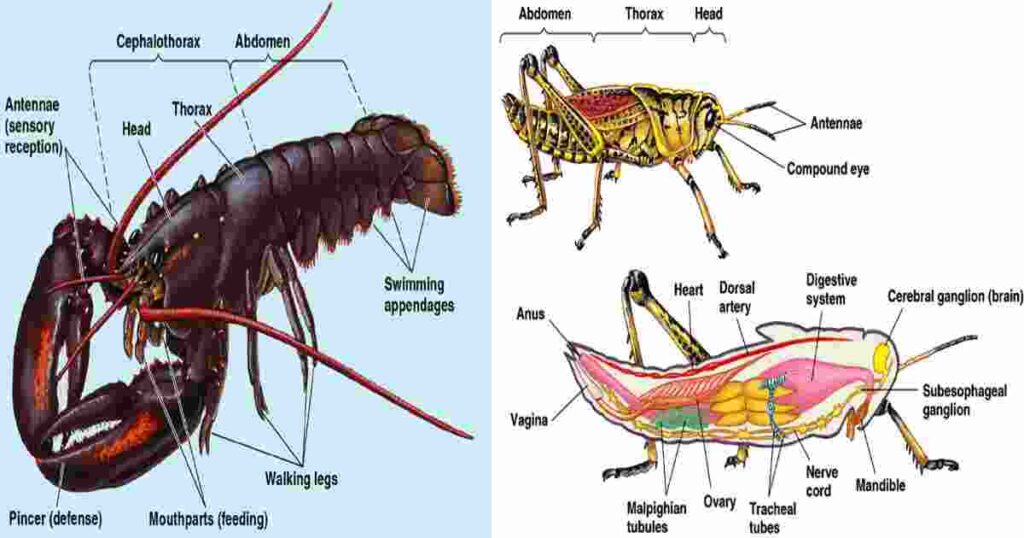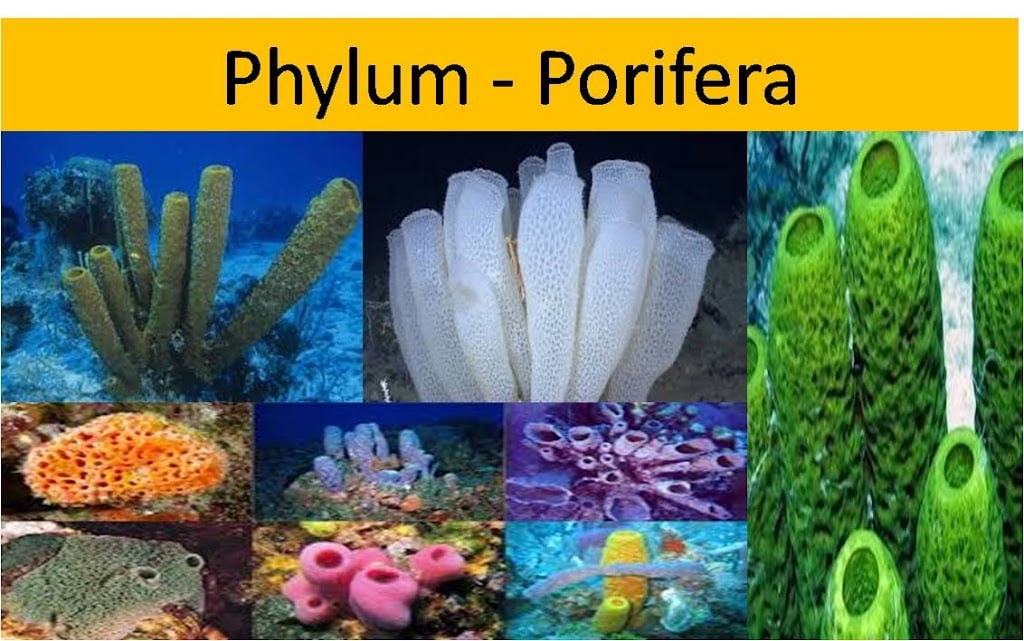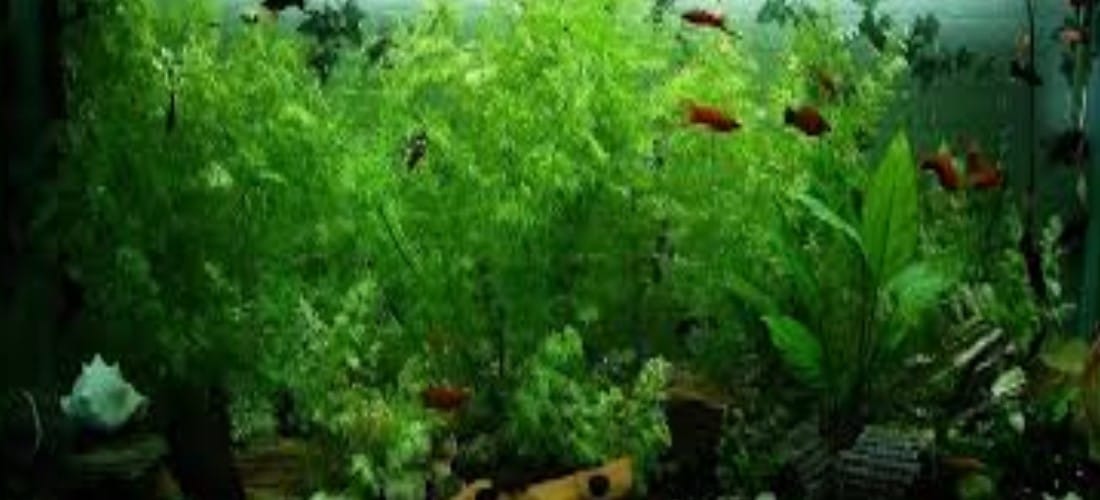Phylum Arthropoda: Arthropods are the largest phylum in the animal kingdom, making up over two-thirds of all known animal species.
They are incredibly diverse and can be found in almost every habitat on Earth, from the deepest oceans to the highest mountains. Here are some of the general characteristics of arthropods
General Characters of Phylum Arthropoda
- The term Arthropoda was coined by – Von.Siebold
- The bodies of arthropods are divided into multiple segments, which allows for a great deal of flexibility and specialization. Each segment may have its own appendages or other structures.
- Arthropods have jointed legs, antennae, and mouthparts. These joints allow them to move their appendages in a wide range of motion, which is essential for locomotion, feeding, and defense. ‘Phylum Arthropoda’
- Arthropods also have an exoskeleton made of secreted chitin and protein and the functions is protection & muscle attachment.
- Arthropods are triploblastic, meaning they have three germ layers (ectoderm, mesoderm, and endoderm).
- Their body is segmented and bilaterally symmetrical.
- Arthropods exhibit an organ system level of organization.
- The body is divided into three main parts these are Head– Contains sensory organs, mouthparts, and often compound eyes. Thorax– Houses the locomotor appendages (legs or wings). Abdomen– Involved in digestion, reproduction, and other functions.
- Body symmetry- Bilateral, triploblastic, heteronymous metamerically segmented animal, with chitinous exoskeleton and jointed appendages.
- Many arthropods have compound eyes, which are made up of many tiny lenses. Compound eyes provide a wide field of view, but they do not provide as good of resolution as vertebrate eyes.
- Their circulatory system is open, with blood (hemolymph) circulating in the body cavity (coelom). ‘Phylum Arthropoda’
- Alimentary canal is with three regions.
- Respiration in small crustaceans-gaseous exchange across the general body surface. aquatic arthropods respire through – gills and book gills. Terrestrial arthropods respire through – tracheae and book lungs.
- Respiratory pigment -if present is mostly haemocyanin (Copper containing respiratory pigment) and few with haemoglobin
- Nervous systems in Arthropoda-Nerve ring with Brian, anal cerci, Statocyst, Antenna, etc.
- Arthropods possess various sensory structures like-
- Compound eyes: Found on the head, composed of many individual lenses.
- Antennae: Used for touch, smell, and balance.
- Simple eyes (ocelli): Detect light and dark.
- Hairs, auditory organs, and statocysts (for balance) are also present.
- Organs of excretion in aquatic arthropods – Saccate nephridia (Green glands and Coxal gland) In terrestrial arthropods-Malphigian tubules
- They mostly unisexual. ‘Phylum Arthropoda’
- Fertilization – External or Internal in aquatic forms; only internal in terrestrial forms.
- Development – Indirect or direct.

Classification of Arthropoda
Athropods affect all aspects of human life and it is classified in to five classes.
Class I: Crustacea
- Crustaceans are mostly aquatic.
- In most species head and thorax unite to form Cephalothorax
- Cephalic appendages are 5 pairs – one pair of first antennae (antennules) one pair of second antennae, one pair of mandibles, one pair of first maxillae and a pair of second maxillae.
- In Crustaceaen, thoracic and abdominal appendages are typically biramous
- Respiration through gill ‘Phylum Arthropoda’
- Excretory organs in crustacea are Green glands or Antennal gland
- Sense organs include statocysts, compound eyes and antennae
Examples: Palemon (Freshwater prawn) Balanus (Rock barnacle) Sacculina (Root headed barnacle) Astacus (Cray fish) Cancer (Crab) Daphnia (Water flea).
Class -II: Chilopoda
- This class includes the centipedes.
- These are terrestrial and carnivorous
- These are trignathic – with mandibles, first maxillae and second maxillae
- Body is divisible into head and trunk
- Each segment of the trunk bears -one pair of clawed legs
- First pair of trunk appendages bear -poison claws
- Respiratory organs – Tracheae
- Excretory organs – Malpighian tubules
- The condition in which a single genital aperture occurs at the posterior end of the trunk is Opisthogoneate
- Development is direct or indirect
Examples: Scolopendra, Scutigera
Class-III: Diplopoda or Dignatha
- The common name of the animals belonging to this class are – Millipedes (thousand legged worms)
- Diplopods are Terrestrial and Detritivorous. They feed on decaying plant material
- Body is divisible into Head, Thorax and Abdomen
- They are Dignathic, with mandibles and gnathochilarium (formed by the fusion of second maxillae).
- Trunk segments are – diplosegments formed by the fusion of two segments during development. Each diplosegment has – 2 pairs of legs, 2 pairs of spiracles
- The masticatory structure formed due to the fusion of ‘maxillae’ is Gnathochilarium.
- Respiration takes place by – Tracheae
- Excretion takes place by – Malphigian tubules
- The condition in which single genital aperture opens in the anterior part of the trunk is Progoneate ‘Phylum Arthropoda’
- Development is indirect
Examples: Spirobolus, Julus
Class -IV: Insecta or Hexapoda
- Insects are absent in Marine environment
- Body is divided into Head, Thorax and Abdomen
- In Insecta head is made up of six segments
- Thorax bears three pairs of jointed legs, hence it is referred as Hexapoda
- Respiratory structure are Tracheae
- Excretory structures are -Malphigian tubules
- The main nitrogenous excretory waste is Uric acid (Uricotelism)
- The least toxic nitrogenous waste and can be sent out of the body in a highly concentrated form with minimum water loss (water conservation adaption) – Uric acid
- Development is Indirect, Larval stages are Present
- Metamorphosis occurs
Examples: – Musca, Housefly, Lepisma, Silverfish, Pediculus, Headlouse, Periplanata (Cockroach)
Class –V: Archnida
- Terrestrial chelicerates belong to-Arachnida
- Prosoma bear – A pair of preoral chelicerae and a pair of post-oral pedipalps and four pairs of walking legs.
- In spiders each chelicera bears a fang into which a poison gland opens.
- Abdominal appendages are modified into Book lungs, spinnerets in spiders and pectines in scorpion.
- Respiratory organs in scorpions-Book lungs
- Respiratory organs in spider Book lungs to tracheae or both.
- Excretory organs are Coxal glands and Malpighian tubules
- Development is – Direct
- Scorpions are Viviparous
Examples: Plamnaeus (Scorpion) Aranea (Spider) Sarcoptes (Mite)






